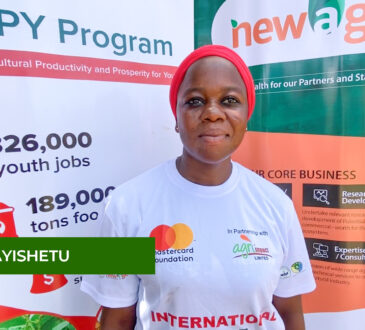
Ignoring technological change in a financial system based upon technology is like a mouse starving to death because someone moved their cheese. Chris Skinner, Author of the bestselling “Digital Bank” and “Digital Human”
Introduction
The outlook for the banking industry is constantly evolving, and the next few years are no exception. As technology and consumer behaviour continue to change, the banking landscape is expected to shift significantly in 2024 and beyond.
The banking sector is in fact about to undergo a massive transition, and given the dynamic nature of consumer behaviour, the sector is anticipated to undergo a number of important developments that will have an unparalleled impact on the direction of banking. Banks are forced to get rid of outdated platforms that have outlived their usefulness and are incompatible with the new era of digitalization. Beyond 2024, a number of factors will shape the banking sector and bring about a paradigm shift in one of the most regulated businesses globally.
- Digital-First Approach
Over the past few years, there has been a growing tendency towards digital banking, and this trend is predicted to continue in the years to come. Customers are favouring digital banking over traditional brick-and-mortar branches more and more due to its convenience and ease of use, especially with the rise of Internet and mobile banking. As a result, banks are now putting more of an emphasis on digital banking and are investing in cutting-edge technologies to give their clients smooth, customised digital banking experiences.
- Artificial Intelligence
The banking sector is about to transform because of artificial intelligence (AI). Banks are using artificial intelligence (AI) to improve customer experience and expedite procedures, from chatbots to fraud detection and predictive analytics. AI is expected to become more prevalent in the future in areas like risk assessment, credit scoring, and individualised financial counselling.
- Open Banking
By enabling third-party financial service providers to access client data with permission, open banking has the potential to upend the established banking model. Customers will be able to view their financial data more comprehensively and make wiser financial decisions as a result. We anticipate an increase in the number of forward-thinking fintech businesses and bank collaborations with these firms as a result of open banking regulations.
- Increased Personalization
Personalisation will become a crucial distinction as banks adopt a more digital strategy. Banks can offer individualised financial solutions and suggestions based on the unique requirements of each customer by utilising data and artificial intelligence. This will increase client loyalty in addition to improving customer satisfaction.
- Blockchain
Blockchain technology has the potential to revolutionize the way banks operate. From streamlining cross-border transactions to improving security and reducing fraud, blockchain can provide numerous benefits to the banking industry. As the technology matures and regulatory barriers are addressed, we can expect to see wider adoption of blockchain in the banking sector.
- Rise of Neo and Challenger Banks
Digital-only banks, or neo-banks, have become more and more common in recent years. These banks use their mobile applications to provide a variety of financial services; they do not have any physical branches. Neo-banks are a desirable alternative for consumers since they may provide competitive interest rates and fees due to their lower overhead costs. We anticipate a growth in the number of neo-banks and heightened industry competitiveness over the next five years.
- Enhanced Security and Data Privacy
For banks, maintaining the security of consumer data has become essential due to the rise in digital transactions. We should anticipate the implementation of more sophisticated security measures in the future to safeguard client data, such as multi-factor authentication and biometric authentication. Banks will also put more effort into informing their clientele about the value of fraud prevention and online security.
- Cashless Society
Future trends indicate that the use of cash will continue to diminish and digital payments will continue to rise. The demand for actual currency is declining as contactless cards, mobile wallets, and other electronic payment systems gain traction. The trend will pick up speed as more companies and governments transition to a cashless future. Consequently, banks will have to make investments in digital payment infrastructure and technology to adjust to this change.
- Big Data and Analytics
Big data and analytics have been a game-changer for many industries, and the banking sector is not exempt from this. With the increase in digital transactions, banks have access to a vast amount of data that can be used to gain valuable insights into their customers’ behavior. By analyzing this data, banks can improve their services, offer better recommendations, and create targeted marketing campaigns. In the next few years, we can expect to see a significant investment in big data and analytics in the digital banking sector
- Sustainability and Social Responsibility
Customers are choosing their banks with more awareness of the effects their decisions have on society and the environment. Banks will be required to demonstrate their social responsibility and sustainability by their actions, such as by funding eco-friendly projects or investing in renewable energy projects. Customers will be searching for options that are consistent with their values, and this will also apply to the products and services they provide.
Conclusion
In conclusion, it appears that digital, customised, and secure banking is what’s in store for the future. To stay ahead of the competition, banks will need to constantly innovate and adapt to the adoption of new technologies and shifts in consumer expectations. These developments will influence how we bank and open the door to a more effective and customer-focused banking experience as we journey through 2024 and beyond.
References
https://www.finextra.com/blogposting/17161/10-powerful-quotes-of-influencers-that-believe-banking-has-to-change[Accessed March 20, 2024]
https://www.forbes.com/sites/michaelabbott/2024/01/16/the-top-10-banking-trends-for-2024–the-age-of-ai/?sh=27104734510b [Accessed March 20, 2024]
https://www2.deloitte.com/us/en/insights/industry/financial-services/financial-services-industry-outlooks/banking-industry-outlook.html [Accessed March 21, 2021]
[Accessed March 21, 2024]https://thefinancialbrand.com/news/banking-trends-strategies/2024-retail-banking-trends-and-priorities-174327/[Accessed March 21, 2024]








